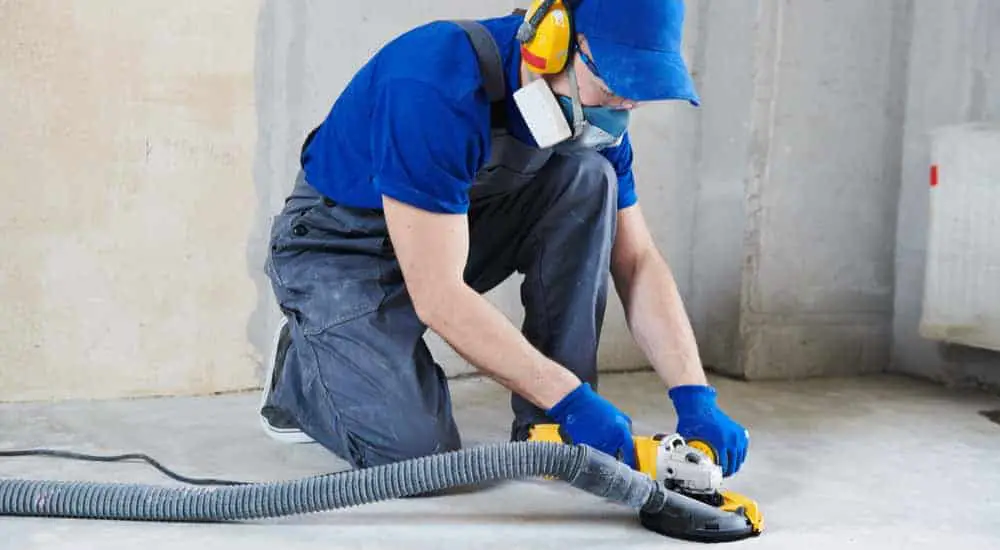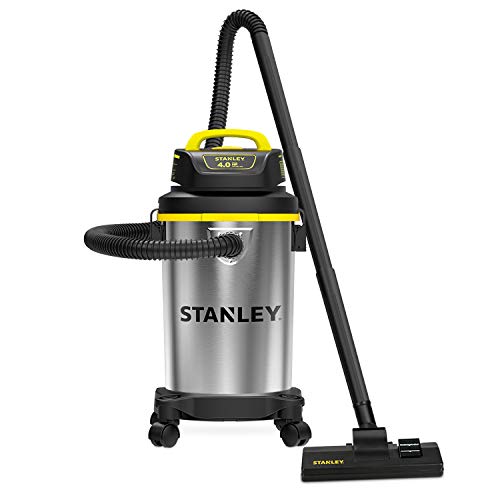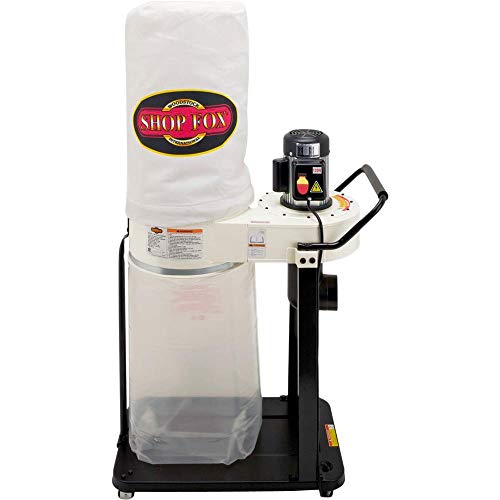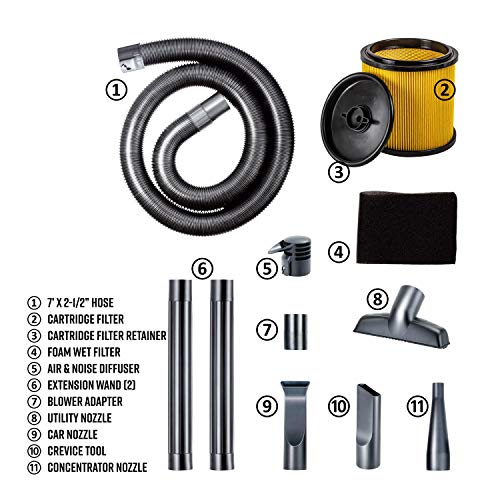For any industrial or woodworking tradesperson, there is nothing that beats the joy of working in a safer and cleaner environment. The problem, however, comes when the tools they use produce too much dust than they can deal with.
This is, however, inevitable because resurfacing or refinishing wood has to produce dust, but the situation can be collected by using an effective dust collection system.
The market is full of inspiring models of dust collectors. This further compounds the challenge of selecting the best dust collector for amateurs, DIYers who are starting woodworking, and even professionals. If you have had a challenge comparing between a shop vac vs. dust collector you are a witness that deciding which one to go for is not an easy feat.
With the almost similar striking features of a shop vac and dust collector, enough research needs to be done to differentiate them. If you are looking forward to buying one of them, read through this post to learn more of the striking differences between the two.
What is a shop vac for dust collection?
A shop vac is a specialized vacuum cleaner that is used for sucking up both dust and liquids while cleaning with it.
It consists of a high-powered motor and suction unit that helps it to suck up the dirt and other chunks of materials and debris from large job sites like a construction site. Also, a shop vac is mostly used in the woodworking and construction industries.
A shop vac features a big and tough hose and a big canister that holds the debris and is an ideal machine for cleaning extra dirty and large spaces.
It may also have wheels that make it easy to navigate around any working space or be a stationary one. In simple terms, this is a vacuum that fits big-time jobs and not for the easy, practical home cleaning needs.
Small shop vacs are usually fit for small workshops and garages where they depend on electric power. For larger models that can store up to 200 liters or over (53 U.S. gal), there is usually a system that connects them to a compressed air source where they utilize the Venturi effect for production of a partial vacuum.
Some workshops may have built-in dust collection systems.
OUR TOP PICKS
Characteristics of a shop vac for dust collection woodworking
A shop vac is basically a vacuum cleaner at heart. However, its design enables it to accomplish more and, in more environments, compared to any other vacuum. Its unique features include:
Versatility where the shop vac is able to produce enough suction power to pick up not only dust particles but also other pieces of debris, nails, and screws. Also, the vacuum cleaner can also be used in virtually any environment, whether wet or dry.
The shop vac is also able to remove fine layers of dust and also empty a basin of water with the same efficiency.
The shop vac comes in different sizes with the most popular one having up to 50-gallon capacity. The large capacity allows it to clean up a large coverage of debris and dirt.
What is A Dust Collector?
A dust collector is a specialized system designed to enhance the quality of air that is released from commercial and industrial processes. The system works by collecting all or nearly all dust particles and other impurities from the air or gas.
The system is designed to handle high volumes of dust loads. As such, it features a dust filter, dust receptacle or dust removal system, filter-cleaning system, and blower. It differs from a purifier in that the latter uses disposable filters to remove dust.
OUR TOP PICKS
Differences Between A Shop Vac and Dust Collector
History and Invention of Shop Vac Vs. Dust Collector
The first vacuum cleaner was invented from the days of carpet sweepers and manual vacuum cleaners with the first model using bellows. The manual models were invented and developed in the 1860s with the motorized one appearing at the turn of the 20th century.
The first dust collector to be documented was invented by Wilhelm Beth who patented his idea in 1921. The patent was for three filter designs that Wilhelm had pioneered to be used to remove dust from the air.
What it is.
A shop vac is a heavy-duty industrial version of a cylinder vacuum cleaner. The vac consists of a large drum that is vertically positioned and can be on wheels or stationary.
A dust collector, on the other hand, is a system that is designed to collect dust and other impurities from the air. Usually, it is a large system and is used for large commercial and industrial environments and high capacity dust collection.
Uses
A shop vac is called so due to the main uses it is designed for. Mainly, it is used in woodworking shops and construction sites for sucking up screws, nails, sawdust, chunks of wood, and other small metallic pieces.
Larger and more expensive shop vacs can be used for bigger tasks like sucking up water and other wet messes. Such vacs are referred to as wet/dry shop vacs and can be versatile enough to fit a particular need.
A dust collector, on the other hand, can be used in many processes and for either recovering valuable powder or granular solid pieces. They can also be used to remove granular solid pollutants prior to venting exhaust gases out to the atmosphere.
Types
Over time, there have been developments in the industry with new and modernized configurations of both machines. For shop vacs, the most modern configurations include:
Upright Vacuum Cleaners: - this type takes the form of a cleaning head to which a bag and handle are attached. This design employs a rotating brush roll or beater bar that is designed to remove dirt through a sweeping and vibration mechanism.
Canister: - a canister shop vac has a motor and also features a separate dust collector which can be mounted on wheels and connected to the head of a vacuum via a flexible hose.
Drum: - this vacuum cleaner type is the heavy-duty of all and features a canister with a large vertically positioned drum. It can be stationary or be mounted on wheels.
Wet/Dry: - these are specialized forms of the drum/cylinder model and can be used for cleaning up wet or liquid spills.
Pneumatic: - these are specialized forms of the wet/dry shop vac models and are hooked up to an air compressor. The models are mainly used in manufacturing facilities and industrial plants.
Backpack: - these are shop vacs that are commonly used for commercial cleaning and can rapidly work on a large area. They are ideally strapped on the user’s back.
Hand-held: - the hand-held shop vac is powered by mains power or rechargeable batteries and is commonly used for cleaning smaller spills.
Robotic: - this is a form of a carpet sweeper and is equipped with limited suction power.
Cyclonic: - a cyclone dust collector works on the cyclonic separation principle and is usually used in central vacuum systems.
Central: - the canister or cylinder models are vacuum cleaners that use a motor and dirt filtration unit. The vacuum is usually located in a central location and connected by pipes fixed to vacuum inlets either in or outside the room.
Constellation: - a vacuum cleaner that operates as a hovercraft floating on its exhaust as it does not have wheels.
The different types of dust collectors include:
- Inertial separator: - separates dust from gas streams by using a combination of centrifugal, inertial, and gravitational forces. Further, they fall under three types:
Settling chambers
Baffle chambers
Centrifugal collectors
Fabric filters: - also known as baghouses and used for separating dust particulates from dusty gases by way of filtration.
Wet scrubbers: - dust collectors that use liquids (usually water) to get rid of dust particles from gas streams. They include:
Low-energy scrubbers
Low- to medium-energy scrubbers.
Medium- to high-energy scrubbers.
High-energy scrubbers
Unit collectors: - dust collectors that control contamination at the source.
Electrostatic precipitators: - dust collectors that use electrostatic forces to separate and clear dust from exhaust gases.
Shop Vac Vs. Dust Collector 2019: Which Is Better for You?
For any industrial, workshop, or woodworking professional, what matters most is working in an environment where you are safe from such hazards as dust. While investing in a machine that can help you get rid of dust particles and other hazardous elements in the air or gas, getting the right one is paramount.
This needs you to make the right decision between a shop vac vs. dust collector. The decision you make here is solely dependent on such things as your budget, the workplace, as well as the particular needs since a shop vac can be as equally effective as a dust collector and vice versa.
References & Further Reading
- What Is a Wet-Dry Vacuum? - Sciencing
- Dust Collector - Wikipedia
- Vacuum Cleaner – Wikipedia
- How To Choose Your Perfect Wet Dry Vac – Shop Vac
- Shop Dust Collection: Shop Vacuum Vs. Dust Collector – Woodworkers Guild of America
Last update on 2024-04-05 / Affiliate links / Images from Amazon Product Advertising API












